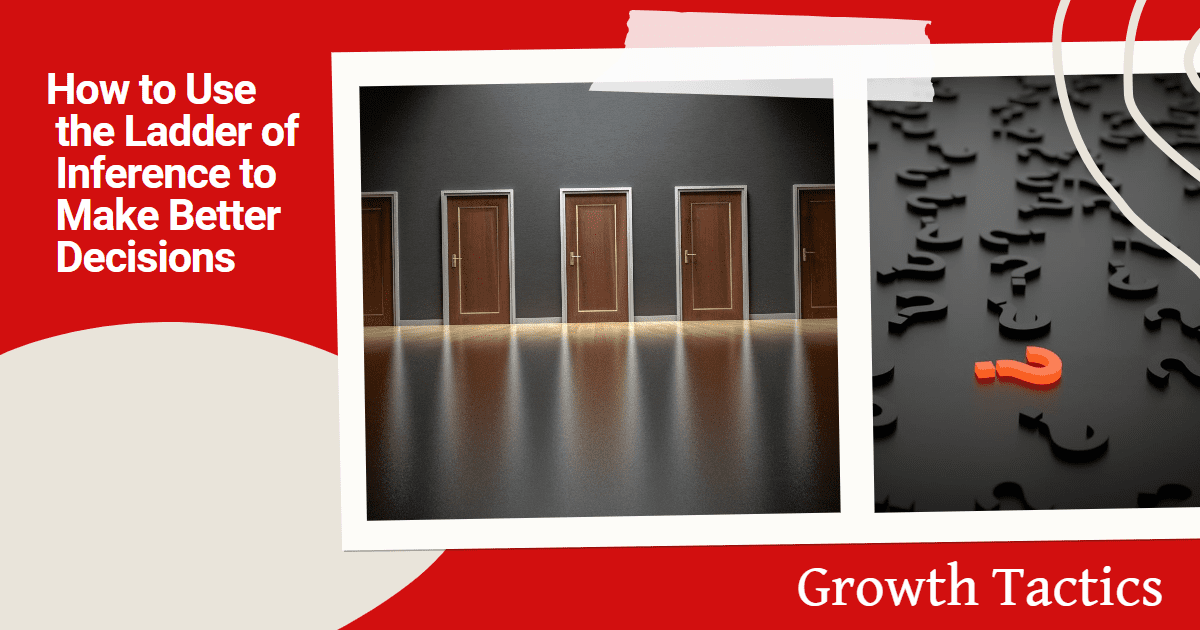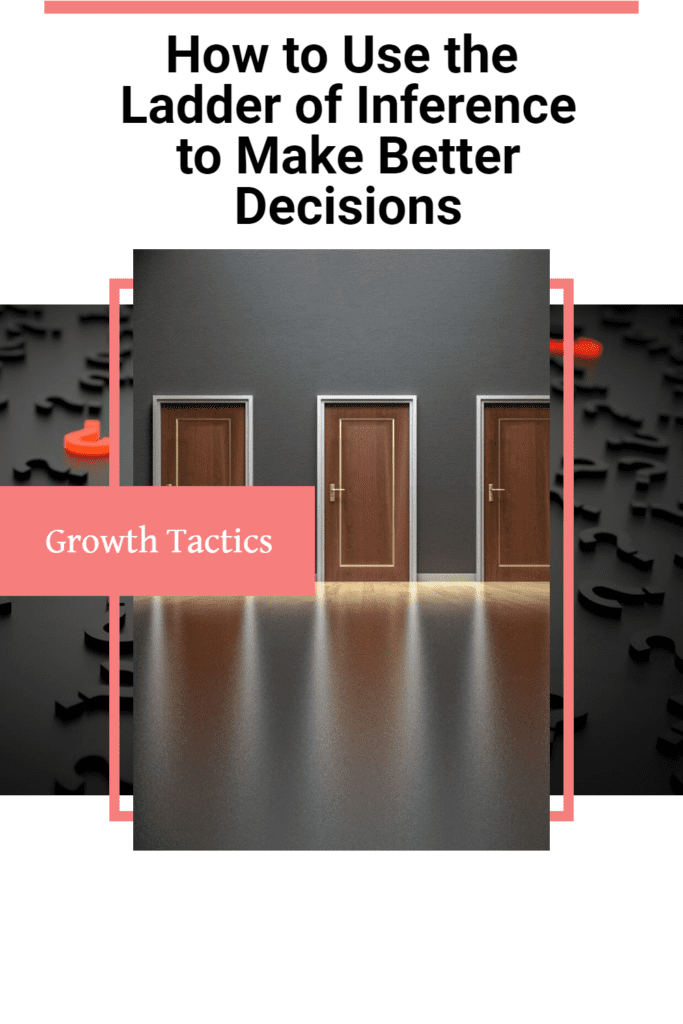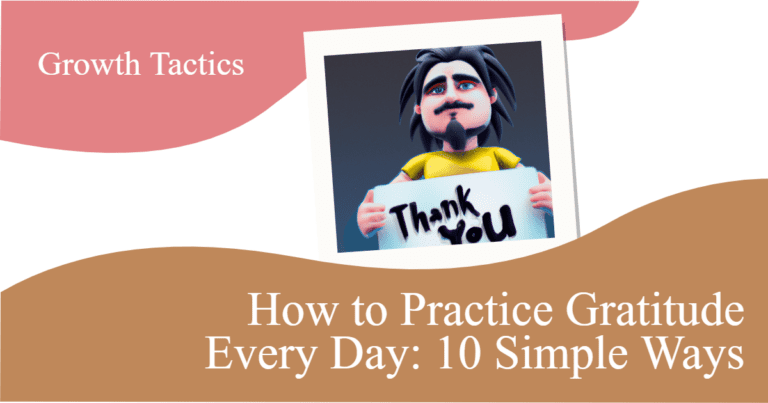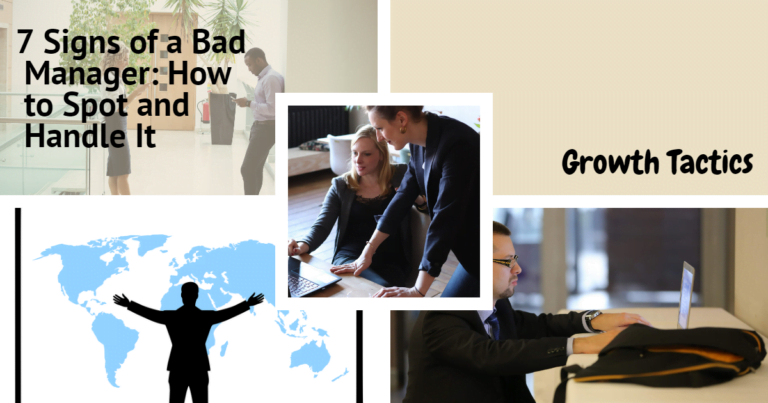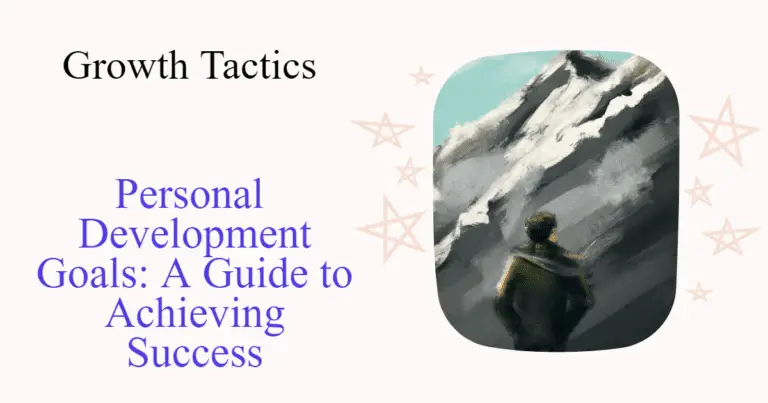Have you ever found yourself jumping to conclusions without considering all the facts? Or maybe you’ve made assumptions based on limited information? Well, fear not! In this article, we’ll explore the Ladder of Inference, a powerful tool that can help you make better decisions by avoiding hasty judgments and biased thinking.
So, buckle up and get ready to climb the ladder to better decision-making!
Jump To Section
1. Understanding the Ladder of Inference
Imagine the Ladder of Inference as a mental model that describes our thought process when making decisions. Developed by Harvard Professor Chris Argyris, this concept is a key component of the Fifth Discipline, a practice of the learning organization.
The ladder consists of seven rungs, each representing a step in our reasoning process. At the bottom of the ladder, we have observable data and facts of a situation. As we move up, we start making interpretations and assumptions based on those facts and our beliefs and prior experiences.
2. Climbing the Rungs: Steps on the Ladder
Let’s take a closer look at the steps on the ladder and understand how they influence our decision-making:
Step 1: Selecting Data
We start by selecting a portion of the available data or facts. Since we can’t pay attention to everything, we tend to focus on what confirms our existing beliefs.
Step 2: Interpreting the Meaning
Once we have selected the data, we interpret its meaning based on our prior experiences and assumptions. This step can be influenced by our biases and beliefs, shaping our understanding of the situation.
Step 3: Making Assumptions
With our interpretations in mind, we make assumptions about what the selected reality means. These assumptions can be implicit and invisible to us unless we consciously question them.
Step 4: Drawing Conclusions
Using our assumptions as a foundation, we draw conclusions about the situation at hand. These conclusions are based on our interpretations and assumptions, rather than a comprehensive analysis of all available data.
Step 5: Adopting Beliefs and Taking Action
Having reached our conclusions, we then adopt beliefs and take actions based on those conclusions. This is where our decision-making takes place, often without fully considering alternative perspectives or revisiting our initial assumptions.
Step 6: Reinforcing Our Beliefs and Actions
Once we’ve taken action, we tend to seek out information that confirms our beliefs and reinforces our actions. This can create a cycle of confirmation bias, where we selectively interpret and ignore information that contradicts our initial conclusions.
Step 7: Hard to Resolve Differences
As we become more convinced of our beliefs and actions, it becomes increasingly difficult to resolve differences with others who might have climbed their ladder to different conclusions. This can hinder collaboration and decision-making in a team or organizational setting.

3. Avoiding Jumping to Conclusions
Now that we understand how the ladder of inference works, let’s explore how we can use it to make better decisions and avoid jumping to conclusions. Here are a few strategies you can apply:
Start at the Bottom of the Ladder
By consciously starting at the bottom of the ladder with observable data and facts, you can build a solid foundation for your reasoning. This ensures that your decisions are based on a comprehensive understanding of the situation.
Work Your Way Back Up
As you climb the ladder, be aware of your reasoning and actively challenge your assumptions and interpretations. This will help you avoid tunnel vision and open yourself up to alternative perspectives.
Explain Your Reasoning to Others
One effective way to test the validity of your conclusions is to explain your reasoning to a colleague or friend. By engaging in a dialogue, you can uncover hidden biases and identify flaws in your thinking. If your argument is sound, it should hold up to scrutiny.
Consider Different Conclusions
Be open to the possibility that others may have climbed their ladder to different conclusions. Embrace diverse perspectives and use them to challenge and refine your own thinking. This can lead to more robust decision-making and innovative solutions.
4. The Ladder of Inference for Better Decision-Making
The ladder of inference is a practical tool you can use to improve your decision-making skills. By making conscious choices at each step of the ladder, you can avoid hasty judgments and biased thinking. Here’s how you can put this tool into practice:
- Recognize your assumptions and beliefs: Be aware of the assumptions and beliefs that influence your thinking and decision-making.
- Select and interpret data consciously: Instead of cherry-picking data that confirms your beliefs, strive for a comprehensive and balanced understanding of the situation.
- Challenge your interpretations: Question the meaning you attribute to the data and consider alternative explanations.
- Seek diverse perspectives: Engage with others who have different views and actively listen to their insights. This can expand your mental models and improve your decision-making.
- Test your conclusions: Before taking action, critically evaluate your conclusions and consider the potential consequences of your decisions.
- Adjust your reasoning as necessary: Remain open to new information and be willing to revise your conclusions based on evidence and feedback.
5. Real-Life Examples of the Ladder in Action
To better understand how the ladder of inference works, let’s look at a few real-life examples:
Example 1:
You’re in a meeting where someone presents an idea you disagree with. Without fully considering the data or the person’s perspective, you quickly jump to the conclusion that the idea won’t work. By consciously climbing the ladder, you can pause, gather more information, and challenge your initial assumptions. This allows for a more constructive and collaborative discussion.
Example 2:
In a team project, you notice that a colleague is not completing their assigned tasks. Rather than assuming they are lazy or incompetent, you can use the ladder of inference to gather more data, understand their perspective, and have a conversation to address any misunderstandings or obstacles they may be facing.
6. Improving Your Decision-Making Skills with the Ladder of Inference
Using the ladder of inference can help you improve your decision-making skills in various contexts. Whether you’re making personal decisions, solving complex organizational problems, or mediating conflicts, this tool can guide your thinking and lead to more effective outcomes.
By consciously working through the steps on the ladder, you can make decisions that are grounded in reality and consider a broader range of perspectives. This will not only improve the quality of your decisions but also enhance your relationships and collaboration with others.
Potential Pitfalls and Challenges: Climbing the Ladder of Inference
As you embark on your journey of using the Ladder of Inference, it’s important to be aware of some potential pitfalls and challenges that may arise along the way. By understanding these obstacles, you can navigate them more effectively and make better decisions. Let’s explore some of the common challenges:
Confirmation Bias: Stuck on Repeat
One of the biggest challenges is the tendency to seek out and interpret information that confirms our existing beliefs. This confirmation bias can prevent us from seeing alternative perspectives or considering contradictory evidence. To overcome this, consciously challenge your own biases and actively seek diverse viewpoints.
Overgeneralization: One Size Fits All
Another challenge arises when we make assumptions based on limited or isolated experiences. We might take one situation and apply it universally, without considering the unique context or specific details. By doing so, we risk oversimplifying complex situations and misinterpreting data. It’s crucial to gather sufficient information and evaluate each situation individually.
Lack of Awareness: Unconscious Assumptions
Sometimes, we climb the ladder without even realizing it. We automatically make assumptions and draw conclusions based on our own unconscious biases and preconceived notions. It takes effort and self-reflection to become aware of these hidden assumptions and challenge them. Mindfulness and active questioning can help you overcome this challenge.

Premature Problem-Solving: Action without Reflection
When we’re caught up in the heat of decision-making, it’s tempting to rush to action without fully reflecting on our assumptions and conclusions. This can lead to hasty decisions that may not align with the reality of the situation. Remember to pause, take a step back, and critically evaluate your reasoning before taking action.
Communication Breakdown: Misunderstandings and Conflicts
Due to the subjective nature of the ladder of inference, miscommunications can easily arise when individuals climb their own ladders to different conclusions. This can result in misunderstandings, conflicts, and breakdowns in teamwork. To address this challenge, actively listen to others, seek common ground, and engage in open and respectful dialogue.
Emotional Biases: Letting Feelings Cloud Judgment
Our emotions can heavily influence our reasoning process, leading to biased decision-making. When we allow our emotions to guide our thinking, we risk overlooking critical information or making impulsive choices. Cultivating emotional intelligence and separating emotions from facts can help mitigate this challenge.
Lack of Reflection: Forgetting to Revisit Assumptions
Once we’ve made our conclusions and taken action, we may forget to revisit our initial assumptions. This can prevent us from learning and adapting to new information or changing circumstances. Regularly reflecting on your decisions and revisiting your assumptions allows for continuous improvement and growth.
By being aware of these potential pitfalls and challenges, you can navigate the ladder of inference with greater clarity and avoid common decision-making traps. Remember to stay curious, open-minded, and willing to challenge your own thinking. With practice, you’ll become a master at using the Ladder of Inference to make better, more informed decisions.
Conclusion: Key Takeaways
To wrap it up, the ladder of inference is a powerful tool that can help you make better decisions by avoiding jumping to conclusions and biased thinking. By starting with observable data, challenging your assumptions, and seeking diverse perspectives, you can climb

